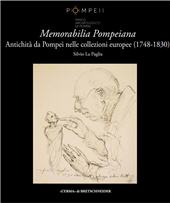Studi e ricerche del Parco archeologico di Pompei : 49, 2023
[Memorabilia Pompeiana : antichità da Pompei nelle collezioni europee (1748-1830)]
P. 1-341
Between the 18th and 19th centuries, Naples and its kingdom were a lively hub for the antiquarian milieu, both local and non-local. The Bourbon Crown made a noteworthy effort to safeguard the archaeological heritage of the State, especially following the beginning of the excavations in the Vesuvian sites: Herculaneum in 1738, Pompeii in 1748, and Stabia in 1749. In fact, these "regi scavi" were an allodial asset, meaning that they were a private property of the Bourbons. Focusing on Pompeii, its (re)discovery in 1748 had an immediate echo in the cultural background at the time and was widely spread throughout Europe. The extraordinary state of conservation of the artefacts recovered at Pompeii lured collectors from everywhere, who tried (successfully or not) to obtain some of these findings, despite the strict governmental regulations.
The main aim of this work is to track down the Pompeiana exported to European collections, both public and private, during the period 1748-1830, namely from the debut of the Bourbon investigations in the ancient Campanian city to the death of King Francis I, thus playing out almost in parallel to the evolution of the legal system governing the historical-artistic heritage of the Parthenopean kingdom. Another important objective is to define the modes that allowed collectors to enter into possession of such a kind of antiquities. For each artefact taken into account, retracing its collecting itinerary is a fundamental goal; furthermore, identifying its contextual data is an intriguing challenge. Meticulous archival research, mainly carried out in the Archivio di Stato di Napoli and the Archivio Storico del Museo Archeologico Nazionale di Napoli, has been essential to developing the whole study. [Publisher's text]
-
Articles du même numéro (disponibles individuellement)
-
Informations


